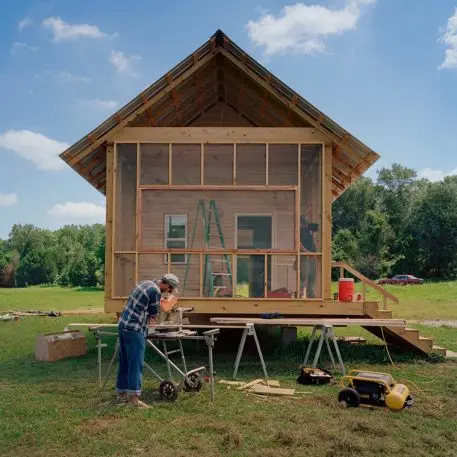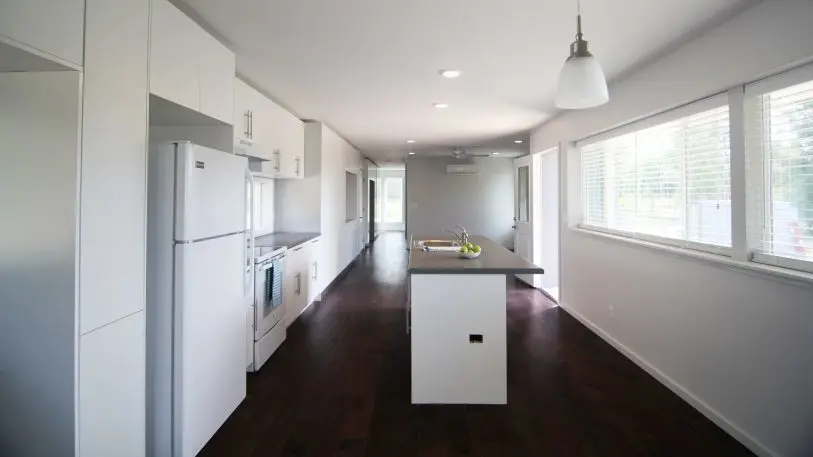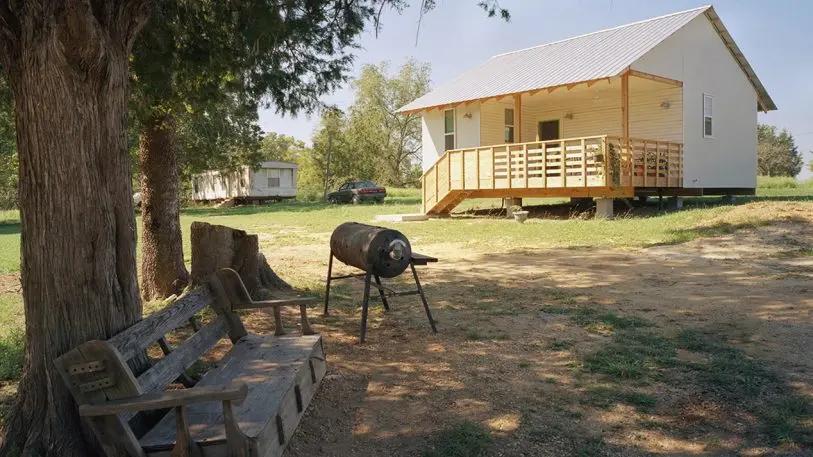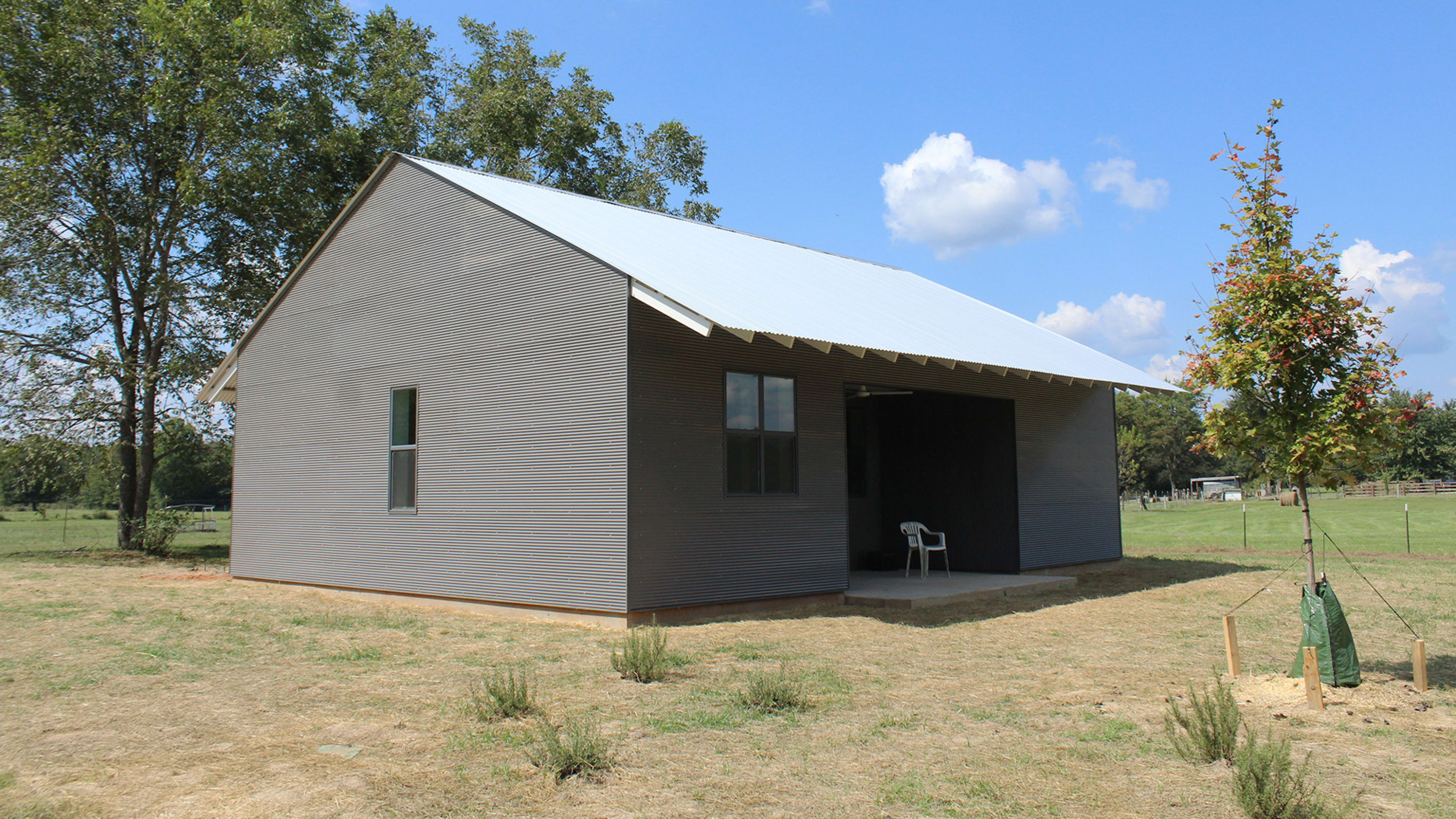When architecture students at Auburn University’s Rural Studio first started working on the 20K initiative in 2005, they had a straightforward–if ambitious–goal: to design a high-quality house for people living in rural Alabama that would provide local construction jobs and cost no more than $20,000 to build.
More than a decade later, after successive classes of students have relentlessly improved the design of the physical house, finding innovative construction techniques, for example, the project has changed course. “What we’ve learned, over the almost decade and a half that we’ve been working on this little project, is that the issues around housing affordability are not brick and mortar problems,” says Rusty Smith, associate director of Rural Studio.

Read more: This House Costs Just $20,000—But It’s Nicer Than Yours
“There’s this huge network of parts that are not particularly integrated with each other,” says Smith. “They’re all in the domains of different areas of interest and expertise, and none of them kind of connect together. That disconnection is one of the many ways that really contributes to the complexity of what homeownership costs.”
Architecture students continue to work on perfecting a design for the house that has the highest possible performance–using materials ultra-efficiently, for example, and making the house stronger than the building code requires–at the lowest possible cost. But that cost will almost certainly exceed $20,000; the first house allotted for $12,000 for materials and $8,000 for construction, but the original materials used would now cost more than $25,000 and continue to rise because of economic factors. “As a point of reference, with a single tweet [from President Trump] about trade wars, the average cost of the material of the house in the United States went up six percent,” says Smith.

But as the architectural work continues, the program has now partnered with a set of other organizations to “take a holistic approach to tackle the systemic issues that face housing affordability in the country,” he says. Fannie Mae, the government-backed mortgage lender, is now collaborating with the program as a way to help address the nationwide shortage of affordable housing. (Under its “Duty to Serve” plan, Fannie Mae needs to increase mortgage capacity in underserved areas–and it realized that it needs to increase the supply of affordable housing to do that.) The 20K Initiative is also talking with banks that offer home loans, the USDA, which provides housing assistance in rural America, nonprofits like Habitat for Humanity, a home insurance organization, the Department of Energy, and others.

Connecting each of these players can lead to more affordable housing, Smith believes. If the house is efficient enough to save someone $25 a month on energy bills, for example, and the bank offering a home loan knew that, it could bring a house within reach of someone living in poverty. “In a conventional mortgage product, for every dollar you can increase your monthly mortgage payment, you can buy about $200 of additional construction that you otherwise couldn’t afford,” says Smith. “So suddenly that $25 that doesn’t seem like much just became $5,000 of added construction cost that you can finance at no additional cost to you . . . The problem is, is that the primary lender has no way to know that.” By connecting various organizations involved in housing, these types of savings can emerge.
The partners will spend the next three years piloting new programs that can drive the cost of housing down, and some of the partners–from Habitat for Humanity and other nonprofits to contractors who want to sell the houses–will work on bringing them to market. “That third year the goal is to be able to sort of turn it loose to whoever wants it and whoever needs it and whoever can afford it,” he says. Notably, Rural Studio said in 2016 that it hoped to provide the plans for the houses as soon as possible, for free. But it now believes that it needs to provide a fuller set of solutions beyond just a blueprint to create a truly affordable home.

Rural Studio will continue to focus on housing for the rural poor in Alabama and a stretch of “persistently impoverished counties” in nearby states, where at least 20% of the population has been living in poverty for 30 years or more. But the program is also beginning to talk with others across the country who want to use the houses in other ways–for example, as accessory dwelling units, or granny flats, in urban backyards, or as tiny houses in tiny house villages. The house may change design by region or application, but Smith believes that the other services that are developed, by linking partners together, could be used nationally.
“We think about middle-class Americans having problems living in the Bay Area or in Seattle or Portland or New York or Chicago or Miami, but it is a Boise, Idaho problem,” he says. “It’s an everywhere in America problem. The fact that teachers and firefighters and police officers–all the people that work in your community and that you want to live in your community–can’t afford to. They all live an hour or more away. There’s this larger workforce housing problem, and if we can actually develop this sort of systemic approach to tackling affordability, it’s not just targeted at the poorest of the poor, in our minds, it will be this fantastic sort of trickle-up kind of project. It could change affordability for all of us.”
Recognize your brand’s excellence by applying to this year’s Brands That Matter Awards before the early-rate deadline, May 3.
